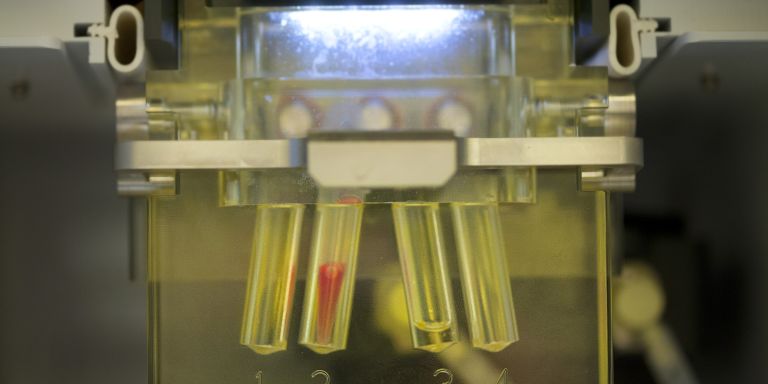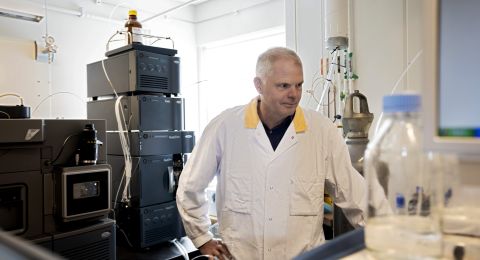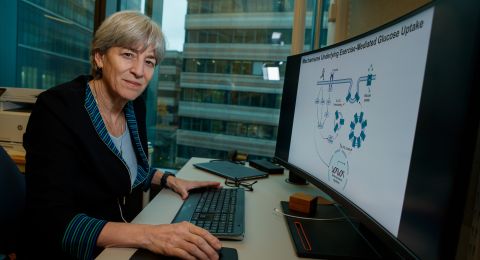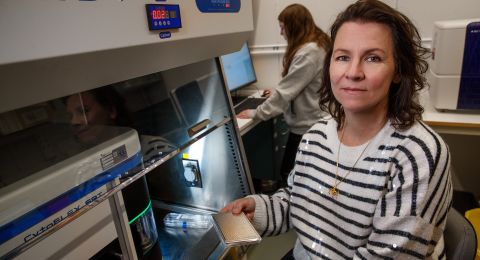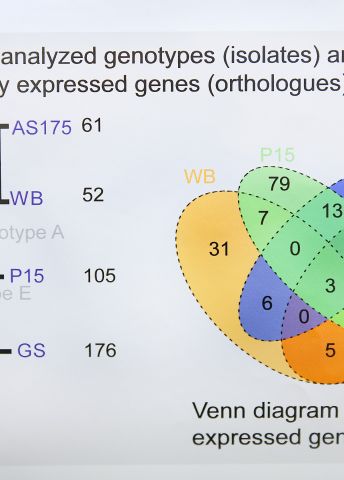
Project Grant 2012
The Human Microbiome Atlas in Health and Disease
Principal Investigator:
Björn Andersson, Professor of Genome Analysis
Co-investigator:
Uppsala University
Siv Andersson
Institution:
Karolinska Institutet
Grant in SEK:
SEK 22.3 million over five years
The fact that we have a rich bacteria flora in our intestines is now beginning to become well-known. But the fact that we live together with an enormous amount of viruses is news to many.
“We are carriers of many chronic virus infections, both viruses that live on us and those that live on bacteria in the body,” says Björn Andersson, Professor of Genome Analysis at Karolinska Institutet.
Some viruses cause a huge commotion when they infect us. Others are there in silence. Researchers know very little about these viruses. Björn Andersson wants to change that. As the coordinator of the project, he will search for unknown viruses, while his colleague Siv Andersson, Professor of Molecular Evolution at Uppsala University, will identify new bacteria. It involves mapping our entire microflora and studying the connection between the microflora and various diseases.
“We will sequence samples from various body fluids and from patients who, for example, have infectious diseases, diabetes, neurological diseases, schizophrenia or epilepsy,” says Björn Andersson.
Unknown virus gave children breathing problems
The researchers get their samples from Tobias Allander, Director of Clinical Microbiology, the unit that analyzes all of Karolinska University Hospital's patient samples. He has developed a method for enriching viruses in clinical materials. A few years ago, the researchers focused on snot that came from children with deep respiratory infections. The parents came to the emergency ward of the hospital because the children had difficulty breathing, but nobody knew what was wrong with them.
Using modern gene analysis methods, Björn Andersson found an entirely new virus that several of the children were carriers of.
“It was a human boca virus. The virus has relatives that cause intestinal diseases. But this virus often causes somewhat severe respiratory infections,” says Björn Andersson.

The discovery opened an entirely new research field in clinical virology. Researchers developed new diagnosis methods and today, the children can get better help when they come to the hospital. If they have this virus, the doctor knows that it will be a severe infection.
In another project, Björn Andersson's research team is mapping samples from twins where one suffers fatigue syndrome, but the other does not.
“We have found certain indications of chronic infections that were in the fatigued, but not those without the syndrome. But this is only an indication. We have not yet looked at enough patients to be able to obtain statistically significant results,” says Björn Andersson.
A gigantic puzzle of unknown microbes
When samples come from patients, the researchers purify out all genetic material, all DNA, and make sure to remove as much of the human genetic material as possible. The researchers break up the remaining genetic material, most of which comes from viruses and bacteria, into small pieces. Then they conduct what is called a sequencing; they read the order in which the DNA's building blocks, the nucleotides adenosine (A), thymine (T), guanine (G) and cytosine (C), lie in the small pieces.
After this comes the huge challenge: piecing together all of these small parts into a whole. It is roughly like they are reading millions of random sentences from a large library filled with DNA books. Every book corresponds to the genetic material for a bacteria or a virus. The researchers have a full understanding of many of the books. If they read a sentence from the book, they know exactly where it fits in and that that particular microbe is in the sample. A large part of the sentences are, however, as yet entirely unknown to the researchers. They have no idea where they come from.
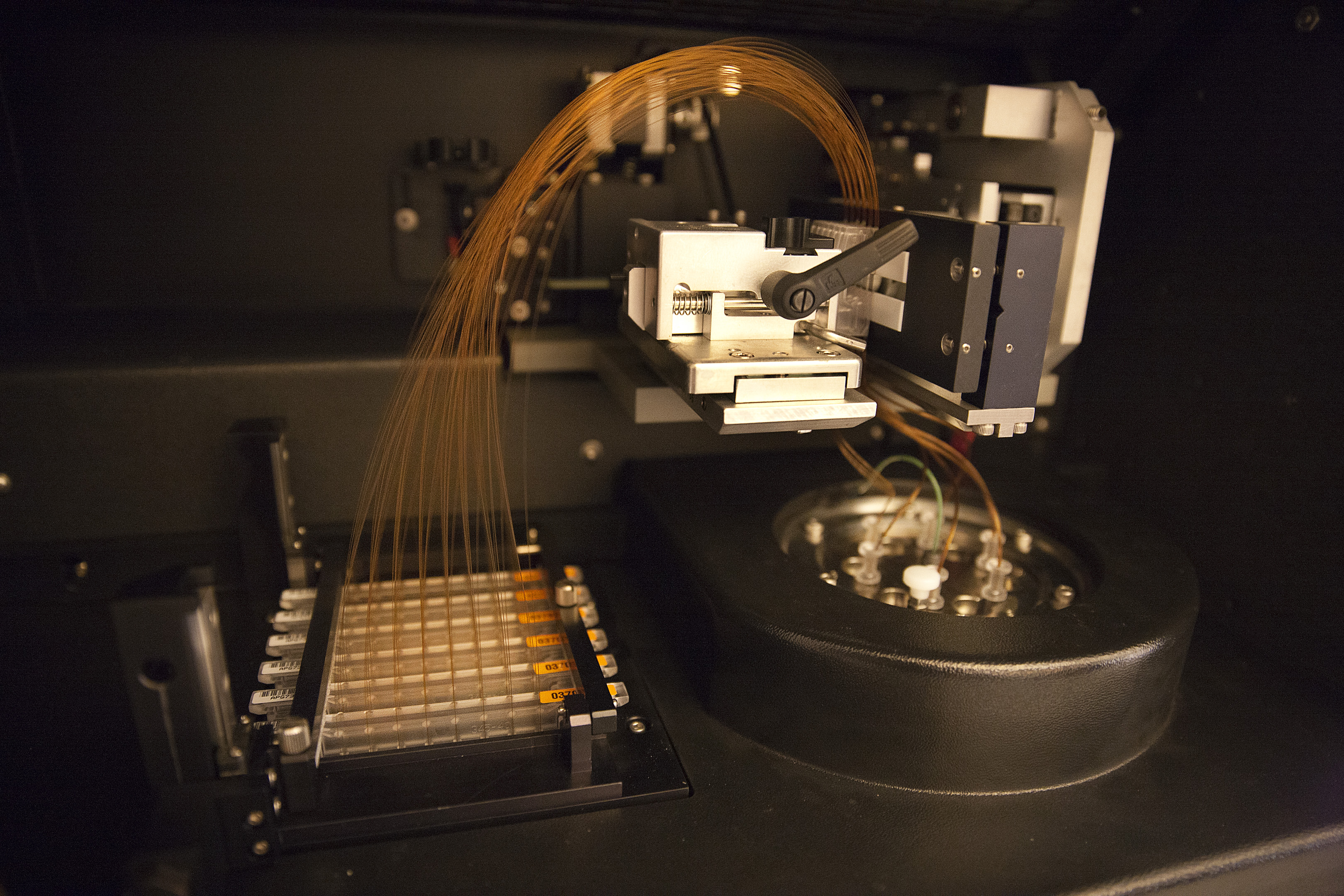
“There is a large proportion in all samples that do not match any known sequence. These are either unknown bacteria or a new virus,” says Björn Andersson.
These sentences are of major interest because it means that the researchers can be on the track of something new. Perhaps an entirely new disease-causing microbe. Such a discovery is the first important step towards being able to diagnose and cure diseases. The chances are good that Björn Andersson and Siv Andersson will form the basis for entirely new research fields. They are the explorers of our time, but instead of mapping new lands in remote parts of the world, they have entered the body's microscopic jungle of unknown creatures. What they will find, nobody knows.
Text Ann Fernholm
Translation Semantix
Photo Magnus Bergström
